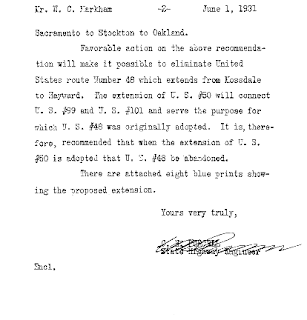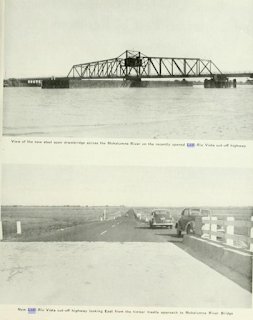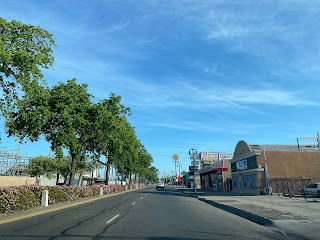Lodi is located in northern San Joaquin County near the Mokelumne River. Lodi traces it's origins back to 1859 when a group of families settled and built a school at what is now the intersection so Cherokee Lane and Turner Road. In 1869 the Central Pacific Railroad was in the process of developing a new line south of Sacramento. The Central Pacific Railroad was offered 160 acres of land by local settlers to develop a town site and a siding which was originally known as Mokelumne Station. The modern name of Lodi was taken in early 1870s to avoid confusion with other nearby communities but it isn't clear what the true namesake was. Lodi would incorporate as a City during December of 1906.
Galt of southern Sacramento County traces it's origins back to 1850 when a group of farmers settled at Dry Creek. The community that began to grow on Dry Creek was for a time was known as Dry Creek Township. In 1869 the siding of Galt at Dry Creek Township was plotted out by the Central Pacific Railroad. Galt was selected as the siding name by request of local rancher John McFarland in honor of his hometown in Canada. Galt would not incorporate as a City until August of 1946.
Mokelumne Station and Galt can be seen on the 1873 Bancroft's Map of California.
The emergence of the automobile in the early 20th Century in California led to the 1909 First State Highway Bond Act which was approved by voters during 1910. The majority of the highways approved as part of the First State Highway Bond Act were largely well established routes of travel. One such highway was Legislative Route Number 4 ("LRN 4") which was defined as a highway from "Sacramento to Los Angeles."
During 1912 Indiana Businessman Carl G. Fisher conceptualized the Lincoln Highway as a major transcontinental Auto Trail. The Lincoln Highway was formally dedicated on October 31st, 1913 and would be aligned south from Sacramento southward towards Stockton via the existing highway corridor. From Galt the Lincoln Highway southwards followed existing LRN 4 on Lincoln Way and Lower Sacramento Road through Woodbridge onward to Lodi. This early alignment of the Lincoln Highway through Lodi and Galt can be seen on the Lincoln Highway Association's Official Map.
The planned route of LRN 4 can be seen on the on the 1917 California State Automobile Association Map. The planned route of LRN 4 (denoted as the red line) was conceived as a direct alignment from Galt to Lodi which would bypass Woodbridge. LRN 4 was planned to be realigned towards an eastern approach to Stockton via what is now known as Woodson Road and Cherokee Lane.
The below photo is a illuminated warning sign on the Lincoln Highway/LRN 4 denoted thirteen bridges were under construction between Sacramento and Stockton. This photo can be seen in the September 1924 California Highways & Public Works.
The January 1925 California Highways & Public Works notes that twelve new bridges along the Upper Stockton Road (Lincoln Highway and LRN 4) had been completed.
The April 1930 California Highways & Public Works announced US 99/LRN 4 between Lodi and Stockton was under contract to be paved in 20 feet of Portland Cement.
During June of 1931 the Division of Highways made a request to the AASHO to extend US 50 from Sacramento to Oakland. The AASHO approved US 50 to subsume all of remaining US 48 shortly after the Division of Highways request was made. The extension of US 50 aligned it through Galt and Lodi via a multiplex of US 99.
The December 1931 California Highways & Public Works discusses the full repaving of US 99/US 50/LRN 4 north of Stockton to Lodi on Cherokee Lane in Portland Cement. The full scale of the repaving project included fourteen miles Cherokee Lane which had been upgraded from a macadam surface. A segment of Cherokee Lane is cited to be 76 feet wide and the project is stated to have preserved numerous trees which had been planted in 1921 north of downtown Lodi.
In the August 1934 California Highways & Public Works the Sign State Routes were announced. California State Route 12 ("CA 12") was announced as the highway originating at CA 1 near Jenner and terminating at CA 49 at San Andreas via Lodi. CA 12 eastbound originally entered Lodi via LRN 53 on Turner Road where it intersected US 99/US 50/LRN 4 at Cherokee Lane. CA 12 was carried through downtown Lodi via a brief multiplex of US 99/US 50/LRN 4 to LRN 24 at Victor Road. CA 12 followed LRN 24 east from Lodi towards San Andreas.
US 99/US 50/LRN 4 through Lodi and Galt can be seen on the 1935 Division of Highways Maps of San Joaquin County and Sacramento County.
The October 1938 California Highways & Public Works details the realignment of US 99/US 50/LRN 4 in Galt. US 99/US 50/LRN 4 is stated to be realigned off of Lincoln Way and Woodson Road in Galt onto a bypass route. The new bypass route of Galt eliminated numerous curves and saved traffic 0.57 miles of travel.
The September 1942 California Highways & Public Works details the opening of the Mokelumne River Bridge west of Lodi on a new alignment of CA 12/LRN 53. The Mokelumne River Bridge project included an adoption of existing Kettleman Lane east from Terminous to Lodi. This new alignment of CA 12/LRN 53 shifted the multiplex of US 99/US 50/LRN north from Kettleman Lane to Victor Road.
The Stockton-Lodi Freeway is cited as being completed in the July/August 1947 California Highways & Public Works. The Stockton-Lodi Freeway is cited to be a feature of the upcoming 1947 California State Fair. The article cites plans to convert US 99/LRN 4 to freeway from the Calaveras River south to Mariposa Road via a bypass of Stockton.
The November/December 1947 California Highways & Public Works features a photo of the Stockton-Lodi Freeway segment of US 99/US 50/LRN 4.
The January/February 1955 California Highways & Public Works describes the opening of construction on the Sacramento-Lodi Freeway segment of US 99/US 50/LRN 4. Construction of the first phase of the Sacramento-Lodi Freeway began in Elk Grove via a ground breaking ceremony held on December 21st, 1954.
The March/April 1956 California Highways & Public Works announced the US 99/US 50/LRN 4 Sacramento-Lodi Freeway as completed north of Lodi towards Galt. US 99/US 50/LRN 4 is stated to have been converted to a full freeway from Jahant Road in San Joaquin County a half mile northward into Sacramento County. A second unit of the Sacramento-Lodi Freeway is stated to be near beginning construction which would extend the freeway northward 7.1 miles through Galt. Another project is stated to be planned to connect the Sacramento-Lodi Freeway southward to Lodi.
From CA 99 northbound former US 99/US 50 on Cherokee Lane is accessible via Exit 264A.





























































































Comments